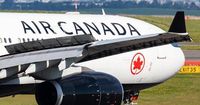Travelers across Canada and beyond breathed a collective sigh of relief this week as Air Canada, the country’s largest airline, announced it was nearly back to full operations after a tumultuous strike by its flight attendants. Yet, for some customers still stranded overseas, the ordeal is far from over. The ripple effects of the walkout, which forced the cancellation of more than 3,000 flights and upended travel plans for thousands, are still being felt—even as the airline touts an “ahead-of-schedule recovery.”
According to CBC, Air Canada declared itself “almost fully operational” as of August 21, 2025, but acknowledged that some passengers remain stuck abroad, waiting anxiously to return home. The airline’s rapid rebound, while impressive, hasn’t erased the frustration and inconvenience experienced by travelers during the shutdown. As CBC’s Britnei Bilhete reported, the human side of the disruption is still playing out in airport lounges and hotel lobbies around the world.
The chaos began when about 10,000 Air Canada flight attendants, represented by the Canadian Union of Public Employees (CUPE), walked off the job last weekend. Their strike brought the airline’s network to a grinding halt, leading to the cancellation of more than 1,500 domestic and over 1,600 international flights, as detailed by Airline Business. The disruption was so severe that Air Canada initially estimated at least a week of travel headaches would follow, with aircraft and crews scattered far from where they needed to be.
But by August 21, all available aircraft in Air Canada’s fleet had returned to passenger service. As of 3:00 PM Montreal time that day, the airline had canceled only about 30 flights across its network—a dramatic improvement from the previous few days. The company credited its workers’ “exceptional commitment and expertise” for the faster-than-expected recovery and announced plans to fly close to its full schedule by August 22.
What made this labor action particularly noteworthy was the outcome of the negotiations. The strike ended on August 19 with a tentative four-year contract that, for the first time, includes pay for boarding passengers—a major sticking point for flight attendants. The deal also secures compensation increases, though it still requires approval from CUPE members. For Air Canada’s flight attendants, the agreement marked a significant step forward in a battle that’s been brewing for years.
“The right to strike is fundamental to collective bargaining, but it has been chipped away,” said Sara Nelson, international president of the Association of Flight Attendants, in an interview with The Associated Press. While Nelson’s union doesn’t represent Air Canada workers, her comments captured the broader frustrations among flight attendants across North America. In the United States, legal and regulatory barriers make it far more difficult for airline workers to strike, thanks to the nearly century-old Railway Labor Act. As a result, U.S. airline strikes are exceedingly rare—unlike the recent Canadian walkout.
For many flight attendants, the root of the unrest lies in pay that hasn’t kept up with the demands of the job. The work is often grueling, with full flights, tight turnaround times, and increasing responsibilities that go far beyond serving drinks and snacks. “We have to know how to put out a lithium battery fire while at 30,000 feet, or perform CPR on a passenger who’s had a heart attack. We’re trained to evacuate a plane in 90 seconds, and we’re always the last ones off,” explained Becky Black, a PSA Airlines flight attendant and union negotiator, in comments reported by the Associated Press.
Yet, as Black and others point out, compensation hasn’t kept pace. Many U.S. flight attendants, like Nathan Miller of PSA Airlines, struggle to make ends meet. Miller, who earns about $24,000 a year working full-time, commutes by plane between Virginia Beach and Philadelphia because he can’t afford to live in the city where he’s based. “I’ve considered finding a whole new job. It’s not something that I want to do,” Miller said. “But it’s not sustainable.”
One of the most contentious issues in recent years has been pay for boarding time—the period when flight attendants are helping passengers get settled on the plane but, at many airlines, aren’t yet being paid. Air Canada’s new contract addresses this, as do recent deals at some U.S. carriers. Delta became the first major U.S. airline to offer boarding pay in 2022, with American and Alaska following suit. Still, many U.S. flight attendants remain uncompensated for what they describe as the busiest part of their shift.
Negotiations for better contracts often drag on for years. At Southwest Airlines, flight attendants bargained for over five years before securing a new deal in 2024 that delivered an immediate 22% wage hike and annual 3% increases through 2027, according to the Associated Press. The contract also included the industry’s first paid maternity and parental leave—a historic win for the largely female workforce. “It was a great relief,” said Alison Head, a longtime Southwest attendant. “Coming out of COVID, where you saw prices were high and individuals struggling, it really meant something.”
Meanwhile, at United Airlines, flight attendants rejected a tentative agreement last month, with 71% voting no. The union is now surveying members to understand why and plans to return to the bargaining table in December. For many, the lack of boarding pay remains a major sticking point.
Back in Canada, Air Canada is trying to put the disruption behind it, offering compensation for hotel accommodations and other out-of-pocket expenses for flights disrupted between August 15 and August 23. But the financial toll is clear: the airline withdrew its full-year 2025 financial guidance, and its second-quarter profit narrowed to C$182 million ($131 million), down from C$410 million during the same period in 2024. The strike is just the latest setback in what’s been a challenging year for the carrier, which has also struggled with sagging demand for flights to the USA.
For passengers still waiting to get home, the ordeal is a stark reminder of the power—and the pain—of labor disputes in the aviation industry. While Air Canada’s quick recovery is a testament to its workers’ dedication, the underlying issues that sparked the strike remain front and center for flight attendants everywhere. As airlines on both sides of the border grapple with similar challenges, the recent events in Canada may well serve as a harbinger of what’s to come elsewhere.
For now, as Air Canada resumes its full schedule and the last of the stranded passengers make their way home, the industry is left to ponder whether the hard-won gains for flight attendants will usher in a new era of labor relations—or simply set the stage for the next round of turbulence.





